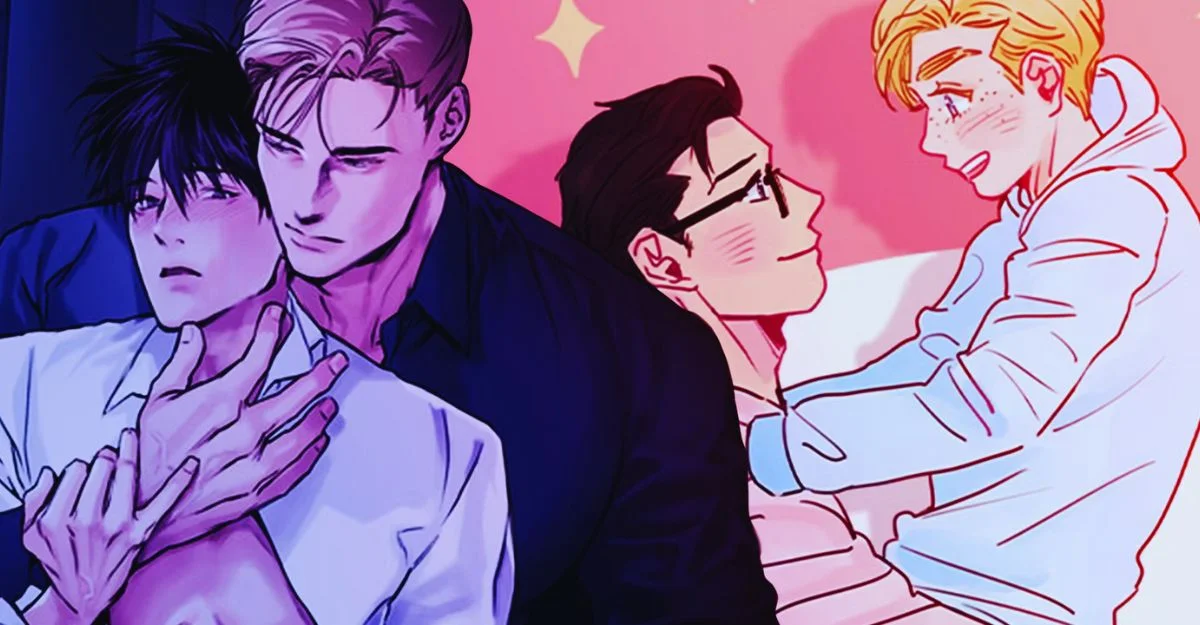BL Manhwa, or Boys’ Love Manhwa, is a genre of comics or illustrated novels that depict romantic and intimate relationships between male characters. Originating in Japan as yaoi, BL content has gained popularity in South Korea with the term ‘manhwa’ denoting comics or print cartoons. BL manhwa often explore themes of love, friendship, and identity, and are known for their diverse representation of LGBTQ+ relationships and characters. The genre has a dedicated following and has contributed to the growing visibility and acceptance of LGBTQ+ individuals in Korean media, making it an important subject of study in understanding the representation of LGBTQ+ identities in East Asian popular culture.
BL Manhwa, short for Boys’ Love Manhwa, is a genre of South Korean comics that focuses on romantic relationships between male characters. With its captivating storylines, stunning artwork, and emotionally resonant themes, BL Manhwa has become a cultural phenomenon both in South Korea and internationally. This article explores the origins, themes, key works, and the growing global popularity of BL Manhwa.
Origins and Evolution of BL Manhwa
Roots in Japanese BL Manga
BL Manhwa draws motivation from Japanese Young men’s Affection (BL) manga, which acquired fame during the 1970s. Early BL manga gave a stage to investigating male connections, frequently made by female craftsmen for a prevalently female crowd. As Japanese BL manga acquired worldwide recognition, South Korean makers adjusted the class to their social setting, bringing about BL Manhwa.
Emergence in South Korea
In the last part of the 1990s and mid 2000s, South Korea’s prospering webtoon industry gave rich ground to BL stories. The advanced stage permitted makers to contact crowds straightforwardly without depending on customary distributers. Titles like Completely Charmed and Love or Disdain were among the early victories that made ready for the class’ extension.
Themes and Storytelling in BL Manhwa
Romance and Relationships
At its core, BL Manhwa focuses on the emotional and romantic development between male protagonists. These stories often highlight themes of self-discovery, acceptance, and the challenges of same-sex relationships in conservative societies.
Diverse Genres
While romance is central to BL Manhwa, the genre is far from monolithic. Creators blend elements of fantasy, historical drama, science fiction, mystery, and even horror to craft unique narratives. For instance, Killing Stalking combines psychological thriller elements with a complex BL relationship, challenging traditional romantic tropes.
Character Archetypes
BL Manhwa often employs familiar character dynamics, such as the “seme” (dominant partner) and “uke” (submissive partner). However, many modern works have begun to subvert these tropes, offering more nuanced and egalitarian portrayals of relationships.
Notable BL Manhwa Titles
1. Painter of the Night
A verifiable BL Manhwa set during Korea’s Joseon period, Painter of the Night follows the connection between Na-Kyum, a gifted however hesitant painter of suggestive craftsmanship, and Seungho, a strong aristocrat. The story investigates subjects of force elements, assent, and creative articulation.
2. Love Shuttle
This carefree yet genuinely rich manhwa rotates around Doyun, an alpha who battles with his postponed optional orientation arousing, and Taehan, his coquettish office collaborator. Joining humor and genuine minutes, Love Transport features the intricacies of work environment connections.
3. Killing Stalking
Quite possibly of the most dubious title in the class, Killing Following hazy spots the lines among BL and mental awfulness. The story follows Yoon Bum, a socially off-kilter man fixated on Sangwoo, who ends up being a vicious chronic executioner. The extreme, ethically vague account started banters about the depiction of undesirable connections in BL media.
The Rise of Digital Platforms
Webtoon Revolution
Webtoons have upset how perusers access and consume BL Manhwa. Stages like LINE Webtoon, Lezhin Comics, and Tapas have made it more straightforward for makers to distribute and adapt their work, contacting a worldwide crowd. The upward scroll arrangement of webtoons, streamlined for cell phones, improves the understanding experience.
Fan Communities and Social Media
Fan translations and online communities have played a crucial role in popularizing BL Manhwa outside South Korea. Social media platforms like Twitter, Instagram, and TikTok are hotspots for fan art, discussions, and recommendations, fostering a vibrant and inclusive BL fandom.
Cultural Impact and Criticisms
Global Acceptance and Representation
BL Manhwa has contributed to broader conversations about LGBTQ+ representation in media. While many BL stories are written by and for women, they offer visibility to male-male relationships, promoting empathy and understanding.
Criticisms and Challenges
Despite its popularity, BL Manhwa is not without criticism. Some works have been accused of fetishizing same-sex relationships or reinforcing harmful stereotypes. Additionally, there is ongoing debate about the lack of LGBTQ+ creators in the genre and whether BL truly represents queer experiences.
Intersectionality in BL Manhwa: Race, Class, and Other Identities
Intersectionality in BL Manhwa
This paper explores the representation of intersectionality in Boys Love manhwa. This chapter introduces intersectionality concepts and the scope of the Boys Love genre, including the Korean wave of cultural export. Korean culture has grown in popularity all around the world through the Internet and is referred to as the Korean wave. The Korean wave is multidimensional and covers various cultural elements such as television dramas, films, music, and dance, as well as food, fashion, and language. Korean manhwa is also a significant part of the Korean wave.
Intersectionality enables us to analyze how we can deal with nonunitary and intersecting identities, wherein one person might embody both egalitarian and dominating roles. As evident in prior Boys Love studies, audience studies predominantly focus on non-Korean audiences, while a significant number of manhwa were actually published through exchanges with Asian and international publishing companies. Moreover, even though commercial publishing rules often associate stereotypical Boys Love with Japanese manga, there are new Boys Love stories now addressing the changing environment of men-women relationships, the new intimacy, bathhouse culture, online dating experiences, and other kinds of personal stories that drew an unexpected readership.
The Role of Race in BL Manhwa
South Korea has a long history of colorism, class structures, and racial hierarchies. This can be seen in the ways that Black people have been an interchangeable reference for negatively conceived images in literature for more than a hundred years. Because of this long history of racial aversion and disdain, South Korea has since legitimized the recurrence of such themes to appear in various works of culture. This includes BL manhwas. Many critics have sought to claim that the use of such race and related associations in these works is misleading and inappropriate while trying to assimilate this form of literary and social work, dictating who can and cannot read or interpret it. However, by both decontextualizing these works discursively, calling them entertainment, and retrenching them discursively with assertions on things like preservation, these critiques inherently contradict themselves by embedding and granting power to those same associations.
My intention is to offer an interpretive reading of a variety of BL manhwa to uncover not whether race or racism and other relative terminologies are a component of this identity politics, but rather the different applications and settings in which the clues utilized in artistically creating this race are being generated with racial reactionary associations. What is the culture of this sphere? What is the tradition in which these creators are deeply invested? What are the moments in ethnic creation in which the idea and concept of a different race, a society stuck in one moment, are being created in terms of the internal content and political messages that would interest the creatives most in trying to convey to their readers? And at whose expense? What part of a society is being assigned and blamed for only having one culture and one tradition while also being accused by their own of being predatory? And what is this obsessive search for a slave price that falsely assuages a loophole in a society? Because should two different inherited wisdom traditions assemble under one standard, thus unburdening association by confusing the dichotomy, it would undoubtedly assist these creators in feeling more experimental in their endeavors. Furthermore, if they can identify with a different heritage, they will be able to escape a history of bloody racism that incorrectly collides with past events by distilling a mocking sliver of unsophisticated education, a good in the 21st century.
The Future of BL Manhwa
Expanding Audiences
As BL Manhwa gains mainstream recognition, creators are experimenting with more inclusive narratives that appeal to diverse audiences. Stories now often feature bisexual, transgender, and non-binary characters, reflecting the complexities of modern relationships.
Adaptations and Cross-Media Success
The success of BL Manhwa has led to adaptations in other media, including live-action dramas, animations, and merchandise. Titles like Semantic Error have been adapted into highly successful web dramas, further cementing the genre’s appeal.
Conclusion
BL Manhwa is something other than a type; a social peculiarity proceeds to develop and break boundaries. With its rich narrating, dazzling masterfulness, and close to home profundity, BL Manhwa reverberates with perusers across the globe, offering a special mix of sentiment, show, and social editorial. Whether you’re a carefully prepared fan or a rookie, the universe of BL Manhwa offers something for everybody to investigate and appreciate.

